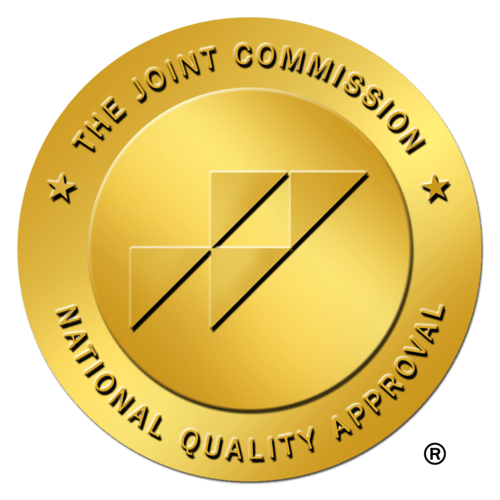
In the fast-paced world of healthcare, effective communication is crucial. Nurses, in particular, are at the forefront of this demanding environment, and they often rely on a multitude of symbols, acronyms, and abbreviations to convey information quickly and accurately.
Understanding these nurse symbols and nursing abbreviations is not only essential for delivering quality patient care but also for maintaining patient safety. In this comprehensive guide, we will delve into the world of symbols in nursing, providing healthcare professionals with the knowledge they need to decode and use these tools effectively.
Table of contents:
- The importance of nurse symbols and nursing abbreviations
- Common nursing acronyms and abbreviations
- Charting and documentation symbols
- Challenges and pitfalls of symbols and abbreviations
- Tips for safely using symbols and abbreviations
The importance of nurse symbols and nursing abbreviations
Nursing is a field where every second counts. Patients' lives can hang in the balance, and the ability to communicate clearly and concisely is a matter of life and death. Nurse symbols and nursing abbreviations serve as a shorthand that streamlines communication among healthcare professionals. Here are some reasons why these symbols and abbreviations are so vital:
1. Speed and Efficiency
In a busy healthcare setting, nurses and other healthcare professionals don't always have the luxury of time to write out lengthy instructions or notes. Symbols and abbreviations allow for the rapid exchange of information, helping to speed up decision-making and patient care.
2. Clarity
Clear communication is paramount in healthcare. Using standardized symbols and abbreviations ensures that there is no ambiguity in the messages being conveyed. This clarity reduces the risk of misinterpretation, which can have serious consequences for patients.
3. Consistency
Consistency is key in any profession, and healthcare is no exception. Standardized symbols and abbreviations promote consistency in communication, reducing the chances of misunderstandings or errors.
Common nurse acronyms and nursing abbreviations
Let's dive into some common nursing acronyms and nursing abbreviations that healthcare professionals encounter in their day-to-day work:
BP: Blood Pressure
Example: "Patient's BP is 120/80 mmHg."
HR: Heart Rate
Example: "The patient's HR is 70 beats per minute."
T: Temperature
Example: "The patient has a T of 98.6°F."
RR: Respiratory Rate
Example: "The patient's RR is 16 breaths per minute."
PO: By Mouth (Oral Administration)
Example: "Administer the medication PO."
NPO: Nothing by Mouth (No Oral Intake)
Example: "The patient is NPO after midnight for surgery."
IV: Intravenous
Example: "Start an IV for fluids."
PRN: As Needed
Example: "Administer pain medication PRN." Learn more about PRN Nursing in our blog.
D/C: Discharge
Example: "The patient will be D/C today."
STAT: Immediately
Example: "Send the blood work to the lab STAT."
Symbols in nursing: Charting and documentation
In addition to the above abbreviations, nurses frequently use symbols in nursing charting and documentation. These symbols are a shorthand way of recording vital patient information. Here are some common charting symbols:
1. ↑: Increase
Example: "Patient's pain level ↑ after medication administration."
2. ↓: Decrease
Example: "Patient's fever ↓ after antipyretic medication."
3. →: Indicates a trend or change
Example: "Patient's respiratory rate → increasing over the past hour."
4. Δ: Delta (Change)
Example: "There was a Δ in the patient's condition."
5. ≠: Not Equal
Example: "The size of the wound ≠ from yesterday."
6. ✓: Checked or Completed
Example: "All medications for this shift have been ✓."
These symbols help nurses and other healthcare professionals efficiently document and communicate changes in a patient's condition. They provide a visual cue that draws attention to important information in a patient's chart.
Challenges and pitfalls of nurse symbols and abbreviations
While nurse symbols and nursing abbreviations can be incredibly useful, they are not without their challenges and potential pitfalls:
1. Misinterpretation
In some cases, abbreviations can be misinterpreted, leading to medication errors or other adverse events. For example, "QD" can be read as "QID" (four times a day) instead of "once a day."
2. Legibility
Poor handwriting or illegible abbreviations can lead to confusion and errors. This is why electronic health records (EHRs) are increasingly used to improve documentation legibility.
3. Lack of Standardization
Not all healthcare facilities use the same nurse symbols and nursing abbreviations. Differences in interpretation can occur, even among professionals from different institutions.
Tips for safely using nurse symbols and abbreviations
To ensure the safe and effective use of nurse symbols and nursing abbreviations, healthcare professionals can take the following precautions:
1. Know Your Facility's Policies
Familiarize yourself with your healthcare facility's policies regarding the use of abbreviations. Some facilities may have a list of approved abbreviations to prevent errors.
2. Double-Check
When reading or writing abbreviations, take a moment to double-check for accuracy and clarity. If something seems unclear, clarify with the person who wrote it.
3. Avoid Unapproved Abbreviations
Stay away from abbreviations that are known to be error-prone or have caused problems in the past. Instead, use approved alternatives.
4. Electronic Charting
If possible, utilize electronic health records (EHRs) or computerized physician order entry (CPOE) systems for documentation. These systems often have built-in checks and alerts to reduce errors.
5. Communication
When in doubt, communicate directly with colleagues. If you receive an unclear abbreviation or symbol, seek clarification promptly.
In the high-stakes world of healthcare, nurse symbols and nursing abbreviations play a vital role in facilitating rapid and clear communication among healthcare professionals. While they offer numerous benefits in terms of speed and efficiency, it is essential to use them cautiously and consistently to prevent misunderstandings and errors.
Healthcare professionals should stay informed about their facility's policies, double-check abbreviations for accuracy, and prioritize patient safety above all else. By decoding and using nurse symbols and nursing abbreviations effectively, healthcare professionals can contribute to better patient outcomes and a safer healthcare environment.





